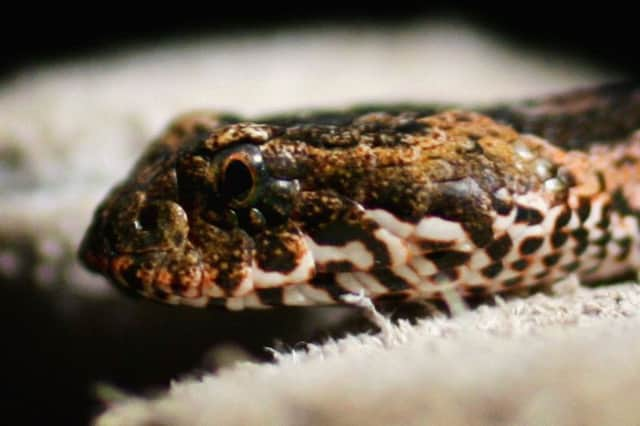Snake bite victims in UK wait too long for treatment


Around 50 to 100 people are bitten by venomous adder snakes in the UK each year, mostly in summer.
In July, 14 people received hospital treatment for adder bites nationwide, but some arrived too late for it to be effective.
Advertisement
Hide AdAdvertisement
Hide AdProfessor Michael Eddleston, of the University of Edinburgh, said: “We’re seeing an increase in people who have been bitten coming to hospital after 24 hours or so, when their swelling is already quite severe.
“This puts them at risk of painful mobility problems.
“Treatment is much more effective if given early and we would urge victims to get to hospital as quickly as possible.
“Not all will require antivenom but those who do will get it quickly, limiting the extent of the swelling and the long-term complications.”
The most common consequences of poisonous adder bites are swelling and bruising, which can extend from the hand to the chest wall or from the foot to the groin.
This can be made worse by having to walk back to a road to reach transport. Antivenom can substantially reduce the severity of the injury if given early.
However, delaying treatment can lead to intense swelling and pain of the bitten limb and mobility problems that require long-term physiotherapy.
Researchers at the university have urged any snake bite victims to seek urgent medical attention after the getting injured.
Adders are the only species of poisonous snake found in the UK.
Advertisement
Hide AdAdvertisement
Hide AdTheir bites are more common in the summer months, when they are more active.
Sometimes venom is not injected so may not require treatment, although doctors say they should still be monitored for potential problems.
In some cases, bites can cause patients to faint. They can also cause the tongue to swell up, which can lead to breathing problems.
No one has died from an adder bite in Britain for more than 20 years. In a small number of people, a snake bite can trigger a severe reaction, known as anaphylaxis or anaphylactic shock.
Adders are commonly found in areas of rough, open countryside near woodland and are mostly seen in early spring when they emerge from hibernation.
Most have a distinct dark zigzag that runs down the length of their bodies, as well as an inverted “V” shape on their neck. Males are usually white or pale grey with a black zigzag, while the females are a pale brown colour, with a darker brown zigzag. In some cases, adders can be entirely black – which can lead them to being mistaken for others. Adults adults tend to grow to a total length of 25 to 35 inches.
Adders are more likely to emerge in summer months because snakes are cold blooded and are therefore more active when the weather is warmer.